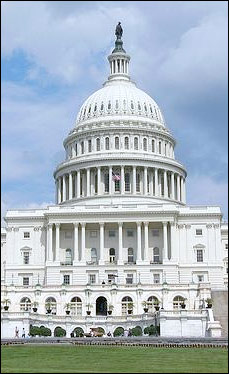 October is here and the political stretch drive is beginning, so it is appropriate to examine where the Senate and House campaigns stand from an aggregate party division perspective.
October is here and the political stretch drive is beginning, so it is appropriate to examine where the Senate and House campaigns stand from an aggregate party division perspective.
For most of the election cycle, Republicans appeared to be on the precipice of capturing the Senate majority, taking it away from Harry Reid and the Democrats. But, new swings in momentum show a more Democratic trend.
Recently, Democratic incumbents in Florida and Ohio have gained strength and open seat contender Tammy Baldwin has seized the initiative in the open Wisconsin campaign. Sunshine State polls have been erratic, but Sen. Bill Nelson now seems to have built a consistent and sustained advantage. First-term Sen. Sherrod Brown has also seen the polls ebb and flow, but his mid to high single digit edge over GOP state Treasurer Josh Mandel is stabilizing, at least for the short term. Baldwin’s ad offensive and Republican former governor Tommy Thompson’s recent comments about dismantling entitlements has posted the Democratic nominee to a slight lead.
After some flirtation with breaking toward the Democrats, the pure toss-up campaigns in Massachusetts (Sen. Scott Brown vs. Elizabeth Warren), Montana (Sen. Jon Tester opposing Rep. Denny Rehberg), and Virginia (ex-senator George Allen and former governor Tim Kaine) have re-established themselves as dead heat campaigns. All three of these races will likely go down to the wire.
Additionally, there is movement toward Republicans in at least two long shot states, Connecticut and Pennsylvania, while Democrats are making Arizona a race. By most polls, Rep. Chris Murphy (D-CT-5) still leads Republican Linda McMahon, but the gap is closing and the latter has gained the offensive.
The sleepy Pennsylvania Senate race has finally arisen, and Republican Tom Smith’s recent ad blast appears to be bringing him to within a single-digit deficit of first-term incumbent Bob Casey Jr. Democrats are still likely to prevail here and in Connecticut, but there is no question that Republican candidates in both places have created some current positive momentum.
Democrat Richard Carmona, the former US Surgeon General, is pulling much closer to Arizona Rep. Jeff Flake (R-AZ-6) in their open seat battle according to most polls. As in Connecticut and Pennsylvania for the Democratic candidates, Flake still must be considered the favorite to prevail.
The Missouri campaign between Sen. Claire McCaskill who, at the beginning of the cycle appeared to be the most vulnerable Democratic incumbent standing for re-election, and the mistake-ridden Rep. Todd Akin (R-MO-2) is still in toss-up territory. Most believe, however, that activity in the final stretch will favor the Democratic Senator.
Republicans were thought early to be clear favorites in North Dakota and Indiana, but polling is still indicating that both of these campaigns remain close. The GOP appears to be a lock to convert Sen. Ben Nelson’s (D) open Nebraska seat, and Independent Angus King continues to maintain the inside track in retiring Republican Sen. Olympia Snowe’s seat in Maine, though the numbers are closing.
Today, Democrats look to be ahead in enough states to give them a 49-47 aggregate lead in the Senate, with four races in the toss-up column; three of which are currently Democratically held. Hence, the majority remains in abeyance.
The House has been the most stable of the federal political entities in the 2012 cycle. Post-census redistricting will prove to be the determining factor here and that favors the Republicans. It appears the partisan swing will deviate between a +/- three seat margin in terms of aggregate gains and losses for the two parties, but Republican control seems secure.
Democrats could be gaining as many as three seats in Florida and potentially the same or more in Illinois. Republicans are positioned to score similarly in North Carolina. New York and California remain as wild cards.
While the GOP appeared to be in position to gain seats up until the last two weeks, Democrats are enjoying a swing in some House races, too. The best estimate indicates Republicans will comfortably retain control, but Democrats could make an aggregate gain in the low single digits.
Today, it appears that 233 seats are safely or trending Republican as compared to 186 headed to the Democrats. Sixteen seats are considered too close to call, with 11 of the 16 being in GOP currently held districts.










